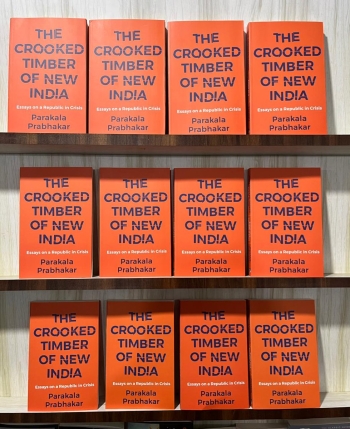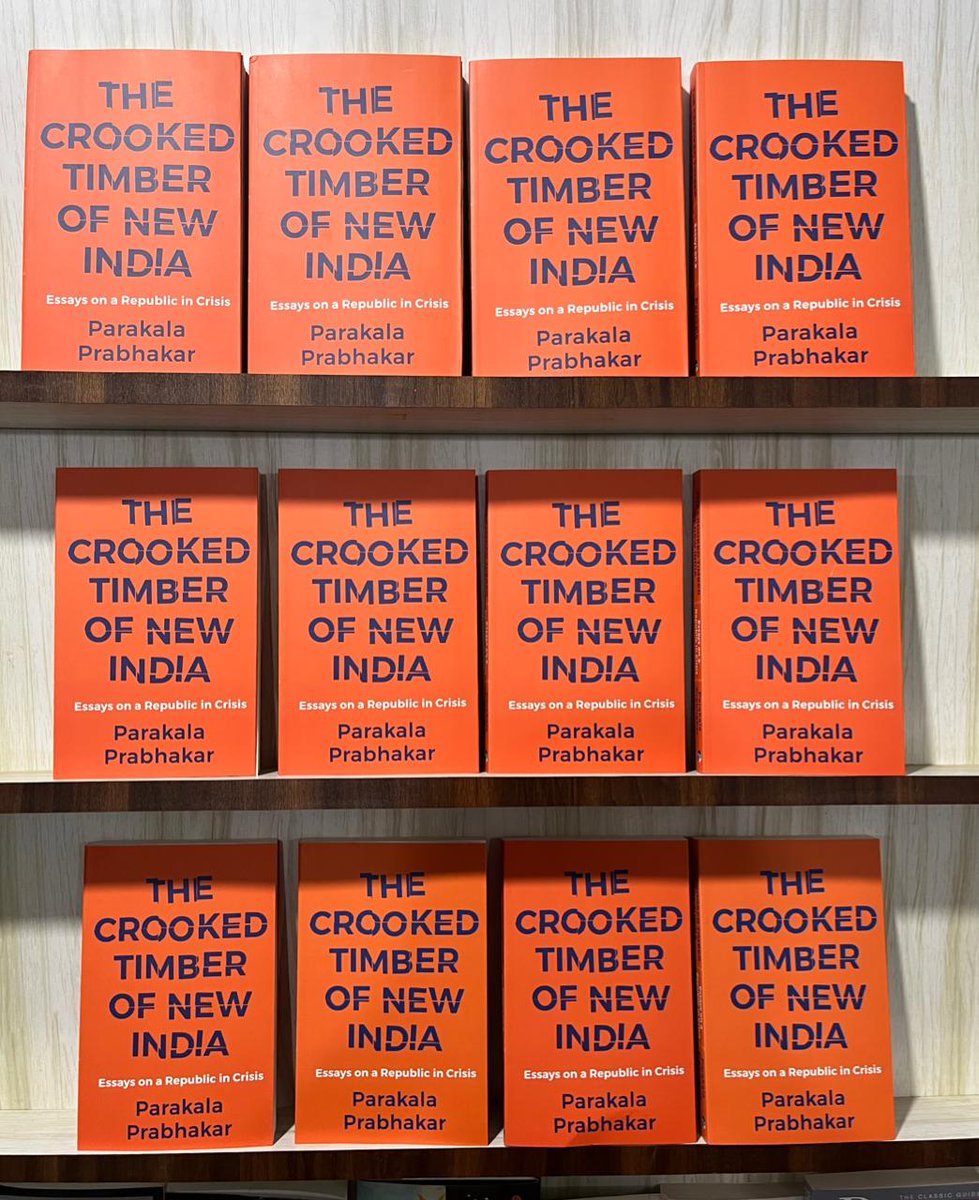
.png) Jacob Peenikaparambil
Jacob Peenikaparambil

The events that unfolded in the second half of May 2023 do not augur well either for democracy or for the future of India. As many as 21 political parties boycotted the inauguration of the newly built Parliament building. A secular country’s Parliament building was inaugurated with rituals of the majority religion which is a blatant violation of the Constitution of India.
Eleven Chief ministers did not take part in the meeting of the Niti Ayog presided over by Prime Minister Narendra Modi. He does not seem to be disturbed by the raging conflicts and divisions in the country. He and his party may be looking forward to a Parliament without the opposition. During the election campaign in 2014, the PM candidate Narendra Modi was calling vociferously for a Congress-mukt Bharat i.e., a Bharat without opposition.
While the solemn inauguration of the newly built Parliament building was going on with Hindu rituals, the wrestlers who were protesting for more than a month were detained forcibly and manhandled brutally by the Delhi police. One of the champions heading the protest tweeted angrily, “Sexual abuser goon Brij Bhushan is sitting in the Parliament today and we are being dragged on the road. Sad day for Indian sports,” she said. In spite of these worrying developments why is the Prime Minister unperturbed? An answer could be found in a recently published book, The Crooked Timber of New India by Parakala Prabhakar, husband of Union Finance Minister Nirmala Sitaraman, especially his application of “Rabbit-Duck illusion” to the Indian political scenario.
The book is a hard-hitting criticism of Modi and the Hindutva ideology of the BJP-RSS combine. His criticism is backed by solid facts and data judiciously gathered and scientifically analysed. Despite the huge failure of the Modi government to deliver on most of the promises made in 2014 Lok Sabha elections and “Modi regime’s staggering incompetence” in manging nation’s economy, “the Prime Minister and his government get away with misinformation, ambivalent statements and plain lies because we, as people, demand neither information, nor accountability”.
Using rabbit-duck illusion, Parakala has explained the reasons for a large section of Hindus, especially the middle class, supporting Modi and the BJP, despite its huge failures on different fronts. By citing the results of a survey conducted by Pew Research Centre between 17 November 2019 and 23 March 2020, Parakala shows how the Hindus are brainwashed by the tripod of Hindu-Hindi-Hindutva (BJP).
According to the survey, nearly two-thirds of the Hindus surveyed, i.e., 64%, say it is very important to be Hindu to be ‘truly’ Indian. And 59% Hindus link Indian identity with being able to speak Hindi. These two dimensions of national identity -- being able to speak Hindi and being Hindu -- are closely connected to Hindutva promoted by the BJP. As per the analysis of Parakala, 60% of Hindu voters who think it is very important to be Hindu and to speak Hindi to be truly Indian had cast their vote for the BJP in 2019 Lok Sabha elections.
Prakala concludes his analysis of the findings of the survey with the following statement. “The percentage of these religious-linguistic-political Hindus, that is, Hindu-Hindi-BJP Hindus, may even be larger than the survey could capture”. Although the Congress had a robust victory in the recently held Assembly elections in Karnataka, the BJP could retain its vote share of 36%, despite drastic reduction in the number of seats. Many political analysts say that Hindutva remains a strong force in Karnataka and one cannot say that the Hindutva is defeated. According to them, Karnataka defeat is mainly due to the misgovernance coupled with large scale corruption of the BJP government headed by Basavaraj Bommai.
For a large section of the Indian people, the duck -- the Hindu-Hindutva construct of Indian identity -- did not appear as an acceptable political project for a long time, especially after the Independence. They could not see the duck; they saw the rabbit -- the liberal and diverse idea of India. Because of the persistent efforts of the Sangh Parivar organizations, gradually the duck, that is, the exclusively Hindu-Hindutva idea of India began to register itself on people’s consciousness.
With time, to some people the duck -- the Hindu-Hindutva idea -- began to appear as the only vision. The rabbit completely disappeared from their vision. They are the hard-core supporters of Hindutva.
To many others, once they had glimpsed the duck -- the Hindu-Hindutva idea -- it appeared both acceptable and unacceptable. Gradually they began to see the duck first. The rabbit hasn’t receded completely from their consciousness, but it is suppressed.
For the large proportion of both these sets of people, once they see Hindu-Hindutva as the only or first choice, they are not able to ‘un-see’ it -- even if they see flaws in it. And from then they are not able to think of the rabbit -- the liberal diverse idea of India, as their primary choice or a choice at all. Here lies the strength of the Modi regime, according to Parakala.
When this process is applied to the post-independence era, one can notice that a plural, humane, and accommodative national identity dominated the political horizon of India till the declaration of emergency by Indira Gandhi. The Hindu-Hindutva idea of India was forced to remain on the margins both electorally and intellectually during the Nehru era.
With the formation of the Janata Party, with the participation of Jan Sangh which is the political wing of RSS, the political atmosphere began to change. Gradually non-Congress parties began to align with the BJP, the later avatar of Jan Sangh, giving it respectability.
Congress also did not hesitate to adopt soft-Hindutva. Thus, Hindutva duck began to claim significant space in the Indian public mind and became a legitimate political option for many, while it became a muscular option for a lot of people.
After Modi came to power in 2014, a large section of Hindus began to see only the Hindu-Hindutva duck. Many non-BJP parties also began to adopt various methods to attract Hindu votes. For example, Arvind Kejriwal built a miniature replica of the Ayodhya Ram Mandir at a sports complex in Delhi and conducted Diwali puja with his entire Cabinet. In the Modi regime, “beating of Muslims in the streets and forcing to say ‘Jai Shriram’, demands to amend the Constitution and declare India a Hindu Rashtra, calls for the genocide of Muslims --none of these are aberrations anymore”.
As per the analysis of Parakala, it is not from performance that the BJP regime draws its political legitimacy and power but from an assertion of Hindu identity, from the “process of othering non-Hindu identities''. “The BJP regime thrives on skilful manipulation of the base instincts and socio-cultural insecurities that lie barely concealed beneath the political topsoil of the nation”,writes Parakala. To the people who are brainwashed by the Hindu-Hindutva ideology, price rise, joblessness, destruction of our constitutional institutions, violation of fundamental rights etc. are “a small price to pay for the gander civilizational mission that this government has set out to accomplish -- that is, to make India a Hindu Rashtra”. The BJP-RSS combine has succeeded to “reduce democracy merely to the rule of the majority, delinking it from justice, equality, and the principle of shared living.” As a result, democracy has become the “rule of a homogenous mob” for a lot of Hindus.
The BJP-RSS combine came to the centre stage of Indian politics and began to demolish the very foundation of a secular, pluralist, democratic country mainly because of two reasons. Decades of political foot work by the Sangh Parivar organizations, infiltrating almost all sections of people and all wings of government is the main reason. They worked tirelessly to build a narrative that in the name of secularism the Congress appeases Muslims and Christians and the Congress is in fact communal. From time to time, they devised and adopted various strategies, prominent among them was the campaign for Ram Mandir in Ayodhya.
The Sangh Parivar organizations have made use of the “services of an articulate, affluent, English-speaking, globe tottering, academically self-confident, culturally assertive crop of elite who make bigotry fashionable”. The BJP-RSS combine has deployed a huge, dedicated, well-trained and highly effective digital army across the country to make use of the social media platforms “to tap into the religious insecurities, animosities and linguistic chauvinism of a vast number of people night and day”.
The second reason is that political forces wedded to the secular, liberal, diverse and inclusive idea of India could not sense that the ground was slipping from under their feet. Some of them flirted with communalism themselves. The civil society and the NGOs took for granted that the foundational principles and the core values of the nation will remain intact.
The Catholic Church that runs more than 50,000 educational institutions with more than 5 core students, appears not to be aware of the danger on their doorstep. If the bishops, priests and nuns who manage these institutions were aware of the danger posed by the Hindutva forces and focused on imparting the core values of the Indian Constitution, they could have created a cadre of Indians who stand for liberal, secular, pluralist, inclusive India. Thus, the Church also miserably failed to read the signs of the time and respond to the challenge of Hindutva.
Now the million-dollar question is how to face the frightening challenge of Hindutva? As Parakala has stated in the preface of the book, the challenge is “to excise from the minds of a significantly large, vocal, influential, section of our people the toxic and ill-founded belief that India belongs to people of only one religion and the rest should content themselves with being second-class citizens”. The Hindus who are under the spell of Hindutva are to be made aware of the consequences of their uncritical support to Hindutva is disastrous to the nation and to themselves. This task is to be done by all non-Congress political parties, especially the Congress, NGOs and all organizations which want secular and inclusive democracy to survive in India.
The Catholic Church, which has a huge number of educational institutions spread throughout the length and breadth of the country can play a crucial role by imparting the core constitutional values to the crores of students studying its educational institutions.